Don't wanna be here? Send us removal request.
Text
Insta
I have also made a new insta-gram account for my Art work, I have all my photos on there, it is great for editing and i find it mush easier to use.
Follow me on Insta - Ruxi_plums_sweets
1 note
·
View note
Text
More performances got to
https://www.youtube.com/my_videos?o=U
0 notes
Video
tumblr
A bath to clean my dirty body
A body that belongs to me
A belonging that sets me free
A freedom that only i can create
A creation that is made by the swirling bath bomb
A ticking bomb is how i feel everyday
And everyday i feel like part of me slips away
A part of me i can not explain
An explanation i will not supply
A supply of water that cleans my body at the start of each day
2 notes
·
View notes
Text
Ritual purification
In Christianity - The principle of washing the hands before celebrating the holy Liturgy began as an practical precaution of cleanness, which was also interpreted symbolically. "In the third century there are traces of a custom of washing the hands as a preparation for prayer on the part of all Christians; and from the fourth century onwards it appears to have been usual for the ministers at the Communion Service ceremonially to wash their hands before the more solemn part of the service as a symbol of inward purity."
In Hinduism - An important part of ritual purification in Hinduism is the bathing of the entire body, particularly in rivers considered holy such as the Ganges; it is considered auspicious to perform this form of purification before any festival, and it is also practiced after the death of someone, in order to maintain purity. Although water pollution means that in modern times there is a need for care during bathing in such rivers, the physical impurities within the river do not diminish the attributed power they have to bring ritual purity. Lesser aspects of Hindu purification ritual include achamana - the touching and sipping of pure water while reciting specific mantras - and the application of a tilaka on the forehead.Punyahavachanam is a ritual performed before any ceremony such as Marriage, Homa etc. Mantras are chanted and then water is sprinkled over all the people participating and the items used.In the ritual known as abhisheka (Sanskrit, "sprinkling; ablution"), the deity's murti or image is ritually bathed with water, curd, milk, honey, ghee, cane sugar, rosewater, etc. Abhisheka is also a special form of puja prescribed by Agamic injunction. The act is also performed in the inauguration of religious and political monarchs and for other special blessings.There are various kinds of purificatory rituals associated with death ceremonies. After visiting a house where a death has recently occurred, Hindus are expected to take bath.Women take a head bath after completing their 4-day menstrual period.
Indigenous American religions - In the traditions of many Indigenous peoples of America, one of the forms of ritual purification is the ablutionary use of a sauna, known as a sweatlodge, as preparation for a variety of other ceremonies. The burning of smudge sticks (which involves the burning of sacred herbs, in some cases for spiritual cleansing or blessing. While the particulars of the ceremonies, and the herbs used can vary widely between tribes and nations, many use forms of sage and cedar that is local to their region. While using scent and scented smoke - such as incense, in religious and spiritual rites is an element common to many different cultures worldwide), the details and spiritual meanings are usually unique to the specific cultures in question. is also believed by some indigenous groups to cleanse an area of any evil presence. Some groups like the southeastern tribe, the Cherokee, practiced and, to a lesser degree, still practice going to water, performed only in bodies of water that move like rivers or streams. Going to water was practiced by some villages daily (around sunrise) while others would go to water primarily for special occasions, including but not limited to naming ceremonies and holidays.
1 note
·
View note
Photo

In Christian tradition the Churching of Women is the ceremony wherein a blessing is given to mothers after recovery from childbirth. The ceremony includes thanksgiving for the woman's survival of childbirth, and is performed even when the child is stillborn, or has died unbaptized.
On the fortieth day after childbirth, the mother is brought to the temple to be churched; that is to say, to receive a blessing as she begins attending church and receiving the sacraments once again. The child (if it has survived) is brought by the mother, who has already been cleansed and washed, accompanied by the intended sponsors(Godparents) who will stand at the child's baptism. They all stand together in the narthex before the doors of the nave, facing east. The priest blesses them and says prayers for the woman and the child, giving thanks for their wellbeing and asking God's grace and blessings upon them.
1 note
·
View note
Text
evaluation
So far in my own work, what stands out to me is my wood work and my performance from the sea. I like the use of the water and i can tie that into my shell work. I would like to use the shells to symbolise a woman’s beauty and a place of home. After doing research on Mendieta I would like to explore using my body in different natural habitats. This will require me to find places where i will not get in trouble and i will need to be facing down into the earth or water so I’m not offending anyone. I want to do a series of short performances where i paint Chinese characters onto my body, maybe my hands, maybe my face and then wash them off. I will look into ritualistic washing ceremony’s.
0 notes
Photo
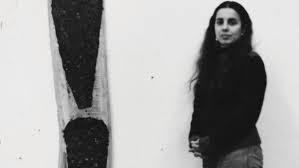
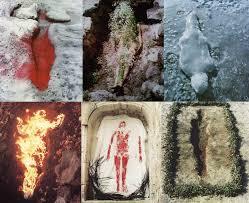
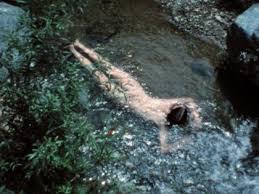
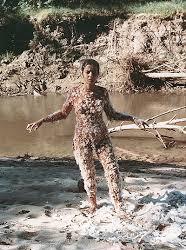
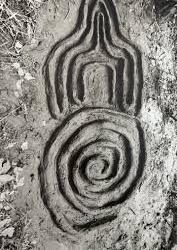
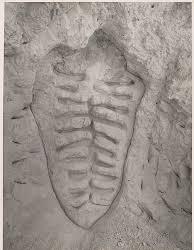
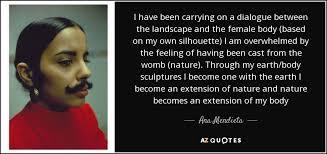
Ana Mendieta quote - “I have been carrying on a dialogue between the landscape and the female body (based on my own silhouette) I am overwhelmed by the feeling of having been cast from the womb (nature). Through my earth/body sculptures I become one with the earth I become an extension of nature and nature becomes an extension of my body.”
Ana Mendieta was a working artist for 15 years of her 37 years of life. Her work was a study of displacement and it’s effects on a person’s soul - both positive and negative. She was separated from her Cuban family at a very young age and was adopted by an American family as a refugee. Throughout her adolescent years she often felt like an outsider growing up in the midwest, she felt an ever-present disconnection from the concepts of mother, place, identity, belonging and home. For 15 years she explored this heart ache through performance art, body art, landscape art, feminist art, film work and photography. She used her body and landscape regarding presence, absence and life’s natural cycles , her work made me consider how powerful spiritual, ethereal and physical connections play a part in our own hunger to be alive and present.
Key Ideas - from website
Mendieta was a key figure in the Body art movement that emerged from the Performance art movement. Her sustained use of the body's simplified and often nude form to depict both presence and its opposite, absence is an essential component to her work whether denoting the human or the ethereal.
Mendieta is recognized as an important contributor to Land art, a movement in which landscape and the work of art are inextricably linked, taking the possibilities of art outside gallery confines. She used the natural environment as a perpetual setting throughout her career, most memorably in her earth-works such as Siluetas, which were created in various natural locations with particular meaning to the artist and adorned with elements indigenous to the areas.Merging with the earth not only became a mark-making process for Mendieta, but also a metaphorical return to mother and ritualistic homage to a universally generic, feminine earth goddess. In the end, the land was perhaps her greatest collaborator, helping her express the body's place within the world and its relationship to nature.
Mendieta is also oftentimes connected with the Feminist art movement for her work on the fluidity of gender and the manipulation of her own body parts to blur the line between male/female identification. But also, she often embraced her own feminine spirit and feminine mysticism in her work, unapologetically and with copious amounts of joy.The consistent use of blood and other organic material such as feathers, rocks, flowers, fire, and the earth reflect Mendieta's passion for religious ritual. She was especially inspired by the strain of Cuban Catholicism known as Santeria. Much of her artwork materialized as a sort of rite, orchestrated to articulate the perpetual cycles of life, death, womanhood, rebirth, and renewal. Because of her early displacement from family and home and the trauma that produced in her early life, Mendieta became a lifelong champion of the marginalized or minoritized whether by racism, sexism, or geography. Much of the passion that went into making her work was stoked by a desire to have everybody recognize those considered "other bodies" and to accept humanity as one throbbing whole rather than a world of disjointed individuals.
Violence remains a mysterious ingredient in Mendieta's legacy. Themes of domestic violence, of turning a blind eye to violence, and forced participation in witnessing violence can all be found as a parallel strain to her more earth, feminine, nature-inspired pieces. Although never really answered, this preoccupation beats below the surface and has raised many questions over the years within fans, critics, and her own personal friends about whether or not Mendieta had personal experience of abuse especially, most poignantly, in regards to the way her life tragically ended.
64 notes
·
View notes
Video
tumblr
This is the video of me getting into the sea and washing the red paint of my body in the thrashing waves. As i was in the Scottish sea i had not though about how hard it would be for the dried paint to come of in the freezing cold water so i had to really vigorously rub the paint of my body - it was so cold i could barely breathe. At the time i was a little disappointed because i thought it would make the performance seem un-intensionally silly but the outcome of the freezing cold water gave the performance real emotion and that made it much more powerful than i expected. I really enjoy that aspect of performance, you have no idea really, what your going to get until you have watched the act back. After doing this I have decided i will have the sea waves and sounds in my video. I will maybe need to find another way to have my body in the performance as this required a lot of time and i also could not go alone, i had a friend to help me record the performance.
3 notes
·
View notes
Photo




Marina Abramovic is a Serbian performance artist - she refers to herself as the godmother of performance art. Her work explores the relationship between the performer and the audience, the limits of the body and the possibilities of the mind. She pioneered a new notion of identity by bringing in the participation of the observers, focusing on, “confronting pain, blood, and physical limits of the body” Abramovic explores elements of ritual gestures, through performance.
Abramovic explores elements of ritual gesture, for example in her performance rhythm 10, 1973 where she mimicing the Russian game, cutting herself 20 times using 20 different knifes. In her performance 5, 1974 In this performance, Abramović sought to re-evoke the energy of extreme bodily pain, using a large petroleum-drenched star, which the artist lit on fire at the start of the performance. Standing outside the star, Abramović cut her nails, toenails, and hair. When finished, she threw each of the clippings into the flames, making a burst of light. Burning the communist five-pointed star represented a physical and mental purification, while also addressing the political traditions of her past. In the final act of purification. Whilst throwing herself into the middle of the star Abramovic actually lost consciousness due to the toxic fumes being let of by the flames and was pulled out by a doctor in the audience.
"I was very angry because I understood there is a physical limit. When you lose consciousness you can't be present, you can't perform."
Abraomovic uses her body through performance to express the limits that the human body can take and how you must be present in the act other wise there is no performance. I thought about this and how i could relate this to some of my performances, if one could be filmed asleep as a performance would that not be an artist un-consicous? Asleep - but then again if one knew that they were going to be un-conscious whilst performing that would give it another meaning?
Abramovic, is a hugely influential and powerful female figure in the art world and teaches us to think of the importance in the performer and audience relationship. I want to really immerse my audience in whatever i want to express.
0 notes
Text
Cai Guo-Qiang
Although his work is predominantly gunpowder on paper or installations and gunpowder used in the sky it really moved me and has performance aspects to it as it is moving and has different stages and has a certain unexpected element to it always.
0 notes
Photo




https://www.youtube.com/watch?v=ViVEUa9bn8w
This is a link to a video of his gunpowder work
I also watched The documentary of his called “Sky Ladder” which is on Netflix
1 note
·
View note
Video
tumblr
Sorry about the sounded of my overly excited voice in this!!
1 note
·
View note
Text
Water balloon painting
I want to use balloons filled with water and different coloured paint to make a performance. This would just be a way of experimenting with performance and different materials. The end important part of the experiment would be the action of the balloon being pierced with a needle and falling on to the paper and not really having control of what images it makes when it falls onto the ground. This is an idea i had after doing some research on the Chinese contemporary artist Cai Guo-Qiang and his use of gunpowder, i thought that water filled balloons was the closest thing to gun powder.
0 notes
Photo






http://www.marthaatienza.com/www.marthaatienza.com/www.marthaatienza.com.html
Martha’s website.
Her video installations resonate with the public so much because she is using art to make the public become aware of the problems her home country faces due to global warming, she is an important female figure in the art world today using performance and photography to capture moments that in reality are making the world gradually desiccate. I want to use my own body in my videos and will experiment with water.
0 notes
Text
Evaluation
As i go further into my FMP project i am becoming more and more interested in the element to water and how i can link this to myself and my mother. I will do some more research into how the sea behaves and how the tides work because of the natural force of the moon which is very much tide to the female. How could i use my body to express the challenges of my relationship with my mother? I want to make recorded performance and also make the sound track to the video.
0 notes
Photo
I wanted to show this again for my FMP research




Lee Bul is a Korean artists that first began with performance but now predominantly work with installations and sculpture. In her performances named ‘carvings’ she questions what it means to be a woman. Her most famous performance is about her own personal experience about abortion - as seen above she suspends herself with ropes in the air for several hours and did this everyday for a week. She is internationally known for her abstract and sometimes grotesque messages and imagery. She gained international recognition after her exhibition in 1997 at the Meuseaum of Modern Art in New York. In the exhibition there was a display of rotten fish called ‘Majestic splendour’ The work is provocative and unhinging, Lee Bul presents these fish in plastic bags and decorates them with beautiful sequences. The work makes me question what it means to be a woman in our modern age and how society perceives woman dressing us up and down.
3 notes
·
View notes
Photo





Mona Hatoum works mainly with video and performance but as she has grown older she has concentrated on installations. Her work plays on themes that are confrontational, violent and works through ideas of oppression and voyeurism, often in reference to the human body. Conflict arises from the juxtaposition of opposites such as beauty and horror, desire and revulsion. She works very intuitively - using materials that seduce and resonate with her. She likes to use her surroundings to inspire her work and if she has a placement somewhere, she will often go around little stalls and antique shops gathering found obects and then changing them for the installations she puts on. I love the use of found objects and then manipulating the objects to give it new meaning and purpose. She also emphasises that when she is creating art works she often re-visits the same ideas again and again but modifies the ideas, constantly experimenting with new ways to express herself.
0 notes